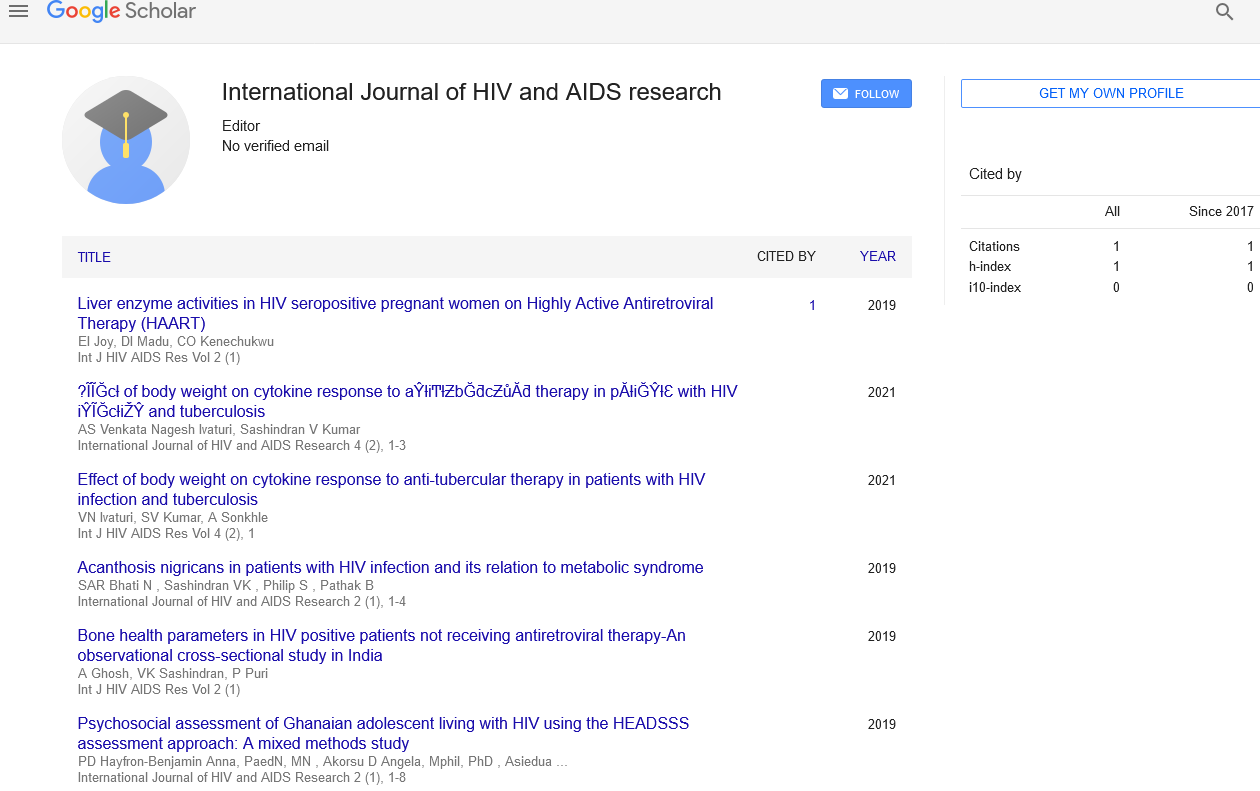
Sign up for email alert when new content gets added: Sign up
Nutrition during HIV infection: Nutritional status and food profile of adults living with HIV followed in DoâÃâ¬Ãâ¢′s hospital district from Burkina Faso
International Conference on Sexually Transmitted Diseases, AIDS and Parasitic Infections & Parasitology, Infectious Diseases, STDs and STIs
September 21-22, 2017 San Antonio, TX, USA
T Bernadette Picbougoum
Centre Muraz, Burkina Faso
ScientificTracks Abstracts: J HIV AIDS Res
Abstract :
Nutritional problems among people living with HIV are common in developing countries. They are current in more of those countries yet, however, nutritional deficits exacerbate the immunosuppression that accentuates the under-nutrition, then accelerating the evolution of the infection. And this needs scientistsâ�?�? attention. In Sub-Saharan Africa, people living with HIV and their feeding habits are little described. Our study aimed to assess food consumption among people living with HIV in a district hospital of Burkina Faso. A cross sectional quantitative study was conducted in Bobo-Dioulasso in the district hospital of Do, during June and July 2014. It concerned infected adults, aged 18 and above. Clinical state of HIV infection with digestives symptoms existing, nutritional status based on body mass index (BMI) by using the WHO classification and consumption by food frequency questionnaire were assessed. We added questions about information and knowledge on feeding. The different food group distribution was classified following common groups. A sample of 124 subjects was interviewed. Most them were women (75.8% being female). The average age of participants was 39.0�?±8.7 years. These patients lived in urban areas (77.4% of cases) and 23.4% had no level in education. About the infection, it was noted HIV-1 in 89.5% of cases, HIV-2 in 4.8% of cases and HIV-1 and 2 in 5.7% of cases. They took ARV treatment in 96.8% of the cases. The most found clinical symptoms are oral lesions (12.9%), anorexia (12.1%) and stomach-ache (11.3%). About 18.5% of the participants were underweighted and 77.4% could have three daily meals. Current food consumption consisted of cereals flour pasta 40.3%, bread 33.9% and rice 33.1%, vegetables prepared in a sauce and a few fruits then the most consumed daily are mangoes, lemon and oranges, 74.2% of oils and fats, sugars 61.3%, meat 33.1%, fish 19.4%, and 13.7% of milk. Running water was used as a drink at 80.7% of the individuals. Uninformed respondents on food importance reached 35.5%. In the studied population, the food energy sources consumption is usual, while those food sources of micronutrients are low. The main likely causes of this imbalance are difficulty to access certain foods and lack of information. Nutritional educational programs should be developed to control HIV.




